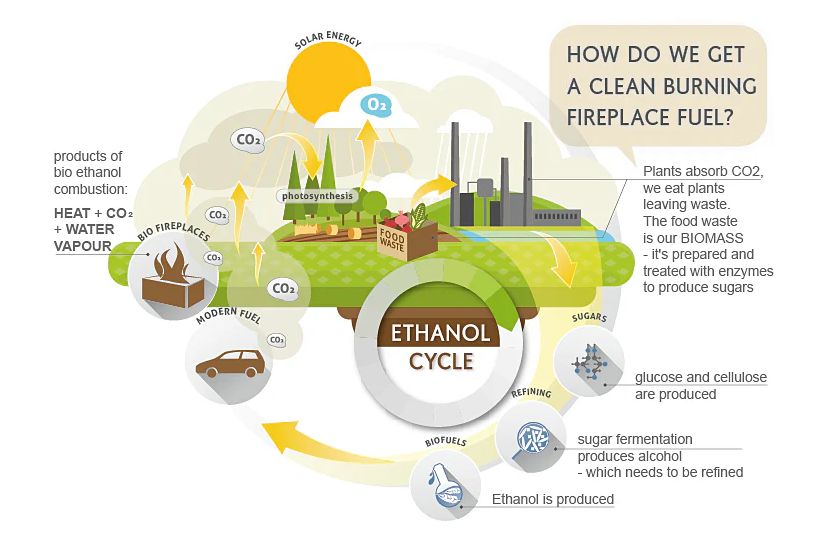Cold storage has quietly become one of the biggest players in sustainability and not just in supermarkets. From farm-to-table delivery chains to climate-controlled medical storage, keeping things cool is an energy-intensive necessity. The exciting news is new technologies are rethinking how we store perishables, reduce waste and protect the planet. Explore the future of cold storage and how it’s shaping a greener tomorrow.
Rethinking the Cold Chain
The “cold chain” refers to the temperature-controlled supply network that keeps food, medicine and other perishable goods safe from spoilage — from production to delivery. While it’s essential for global trade and health, traditional cold storage consumes vast amounts of energy and contributes significantly to greenhouse gas emissions.
With rising demand for refrigerated transport and facilities, the environmental footprint is only expected to grow. That’s why emerging technologies are transforming the future of cold storage in ways intended to reduce both energy use and emissions, creating a path toward a greener, more efficient system. These innovations benefit the planet and make supply chains even more resilient and cost-effective.
Renewable Energy-Powered Cold Storage
One of the most promising developments in cold storage is the shift to renewable energy. Solar-powered refrigerated warehouses, wind-assisted shipping containers and hybrid energy systems are beginning to replace fossil fuel-reliant models. Some facilities are even integrating on-site renewable power generation, reducing both operation costs and carbon emissions.
In sunny regions, solar panels can meet a significant portion of a warehouse’s cooling needs, while wind power offers sustainable support in coastal and high-altitude areas. By pairing renewables with advanced energy storage, cold storage can operate more consistently — even during grid disruptions. This change benefits businesses, communities and the climate all at once. Solar power is one of the best ways to ensure environmental sustainability and eco-friendliness.
Smarter Insulation and Thermal Materials
Refrigeration efficiency isn’t just about the power source — it also depends on how well the cold is kept in. Advanced insulation technologies like vacuum-insulated panels and phase-change materials are revolutionizing how long goods can stay at the right temperature. Manufacturers are implementing new ways to enhance the thermal performance of cold storage units. They’re improving polyurethane and expanded polystyrene foams with innovative solutions to lessen cooling energy consumption.
These materials reduce temperature fluctuations and, in turn, reduce the energy needed to maintain consistent cooling. In logistics, packaging innovations mean produce, pharmaceuticals and other perishables can survive longer journeys without degradation. These improvements are particularly valuable for remote or off-grid areas, enabling reliable environmental footprints and bigger wins for global food and health systems.
AI and IoT for Energy Efficiency
Thanks to artificial intelligence (AI) and the Internet of Things (IoT), cold storage systems are becoming smarter. Smart sensors can track temperature, humidity and energy consumption in real time, alerting operators before issues like spoilage or system failures occur.
AI-powered algorithms can adjust cooling output dynamically, ensuring the system only works as hard as it needs to — saving both energy and costs. Predictive maintenance also helps extend equipment life, reducing the need for frequent replacements. By optimizing every stage of the cooling process, AI and IoT are transforming cold storage from a static utility into an adaptable, energy-conscious operation that supports sustainability without sacrificing performance.
If you want to implement energy efficiency for cold storage at a grassroots level, you can opt for energy-efficient appliances to ensure you’re contributing to lower emissions overall.
Circular Economy and Waste Reduction
Cold storage has a vital role in reducing food waste, which currently accounts for nearly one-fifth of all food produced globally. By keeping goods fresh for longer, cold storage helps prevent spoilage in transit and on shelves.
However, there’s another layer to its sustainability story — the circular economy. Instead of discarding outdated refrigeration units, many companies refurbish or repurpose them, reducing manufacturing waste. Some facilities capture waste heat from refrigeration systems to warm water or power greenhouses — turning a by-product into a valuable resource. These approaches align with a broader shift toward resource recovery and reusability in supply chains, making cold storage a quiet but powerful ally in waste reduction efforts.
Emerging Low-Impact Refrigerants
Refrigerants are the unsung heroes of cold storage — but many conventional ones, especially hydrofluorocarbons (HFCs), have a high Global Warming Potential (GWP). The good news is the industry is transitioning toward natural refrigerants like ammonia, carbon dioxide and certain hydrocarbons, which have far less impact on the climate.
These alternatives are already in use in parts of Europe and Asia, where regulations and incentives encourage greener cooling solutions. Beyond reducing emissions, low-impact refrigerants can improve system efficiency and cut operating costs. As more countries adopt policies to phase out HCFs, we expect these eco-friendly refrigerants to become a standard part of cold storage’s greener future.
While there are many ways cold storage solutions are changing to be more eco-conscious, there are always ways you can do so yourself. For example, you can eat seasonally to ensure the sustainability of the food system.
Cool Story
Cold storage might not be the first thing that comes to mind when you think about climate action, but its impact and potential are enormous. By embracing renewable energy, smarter materials, advanced technology and eco-friendly refrigerants, the industry is proving keeping goods fresh doesn’t have to come at the planet’s expense.
Source link
Beth Rush biofriendlyplanet.com



